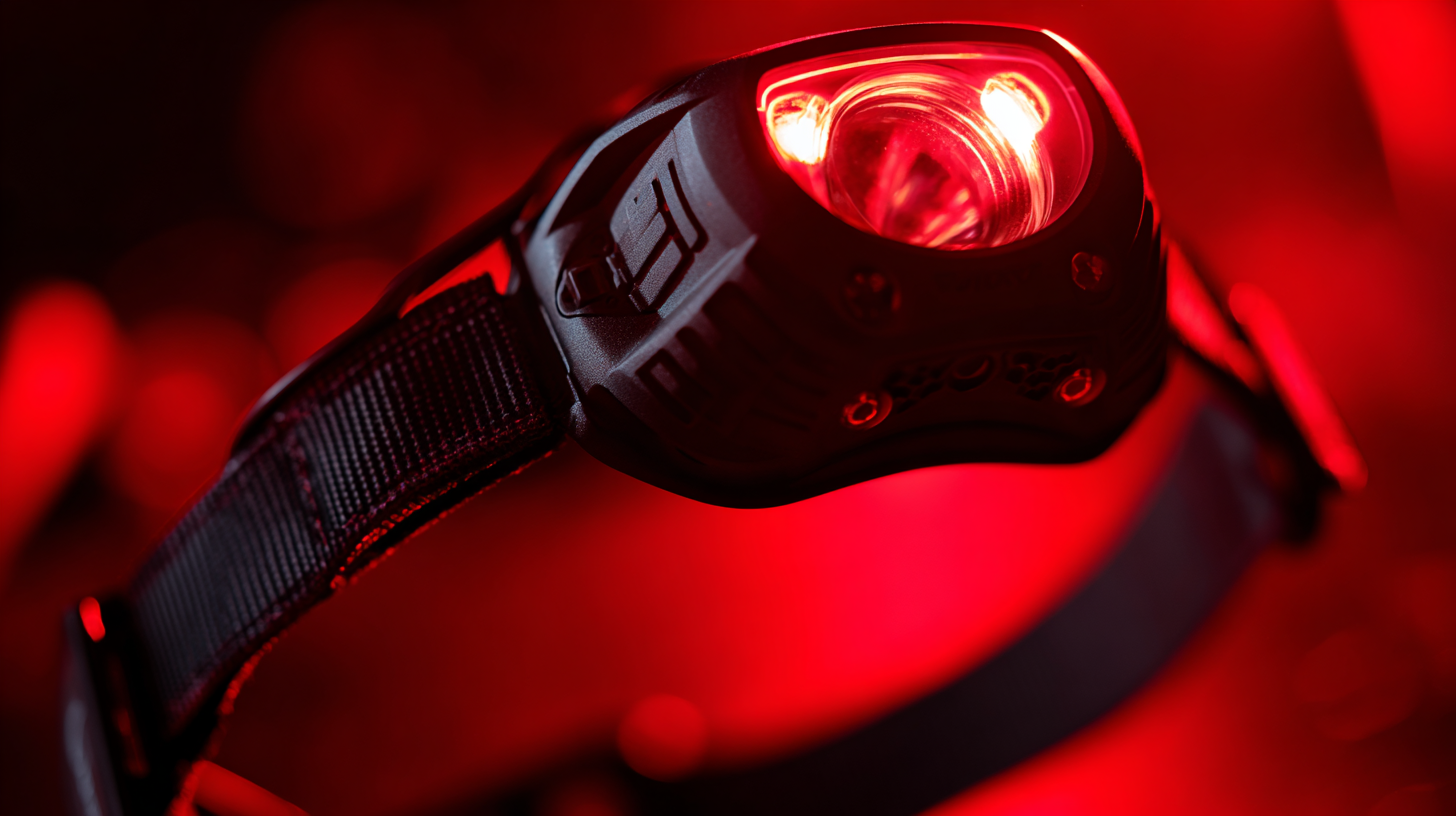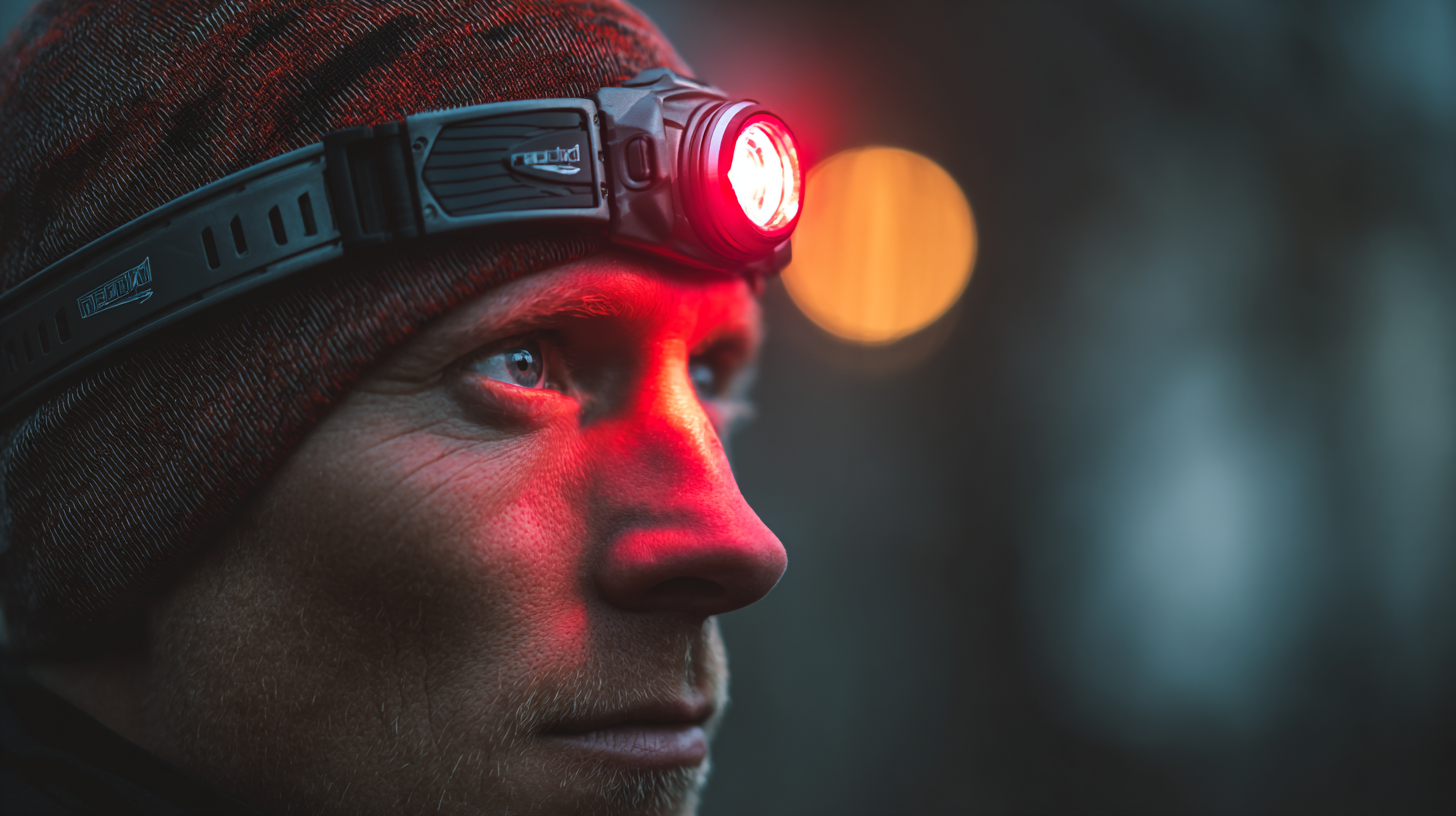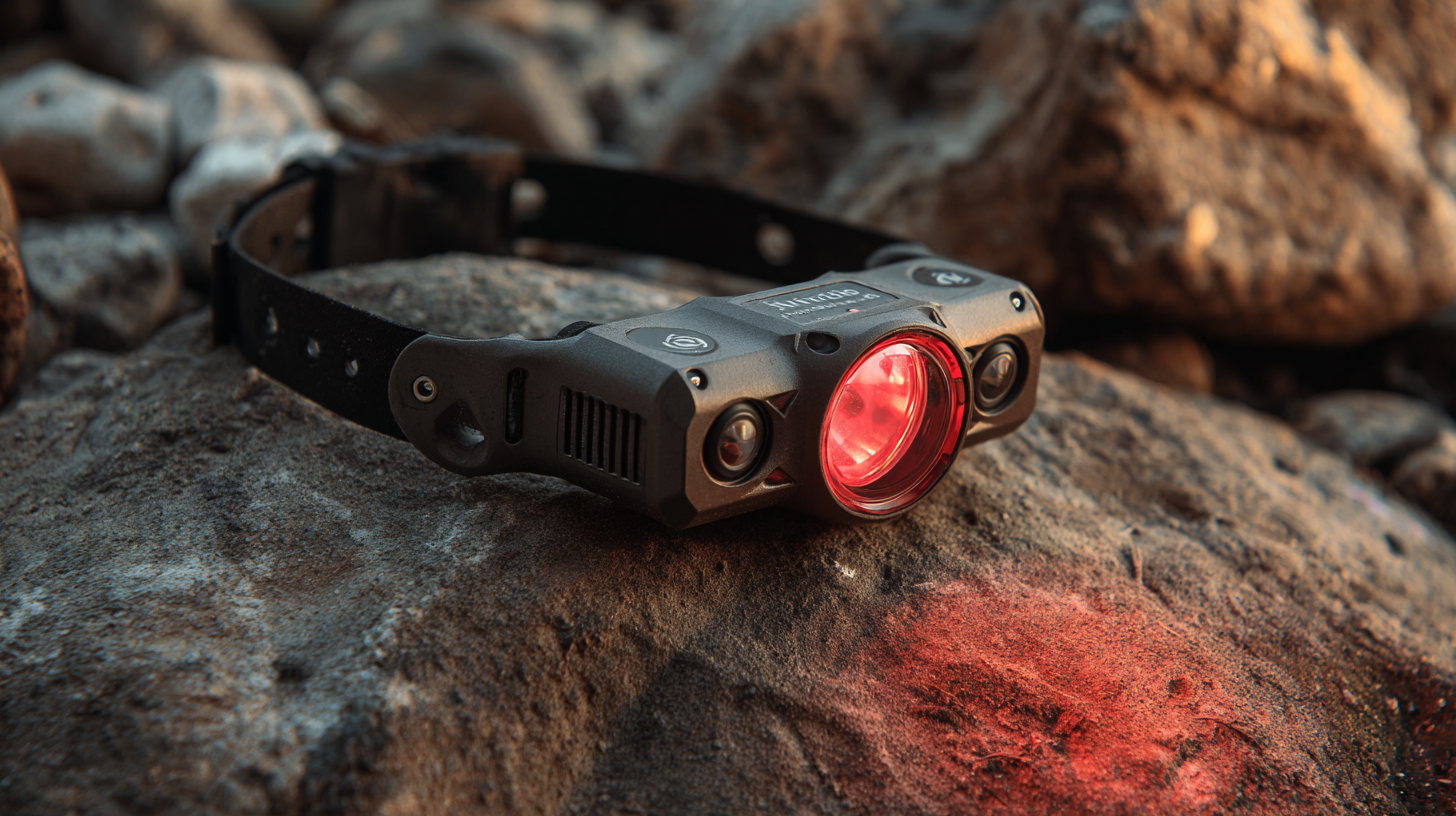Top 5 Features and Specifications of the Best Red Light Headlamp for Global Buyers
The demand for innovative lighting solutions has surged in recent years, with the global headlamp market projected to reach $3.1 billion by 2025, driven by advancements in technology and the increasing popularity of outdoor activities. Among these innovations, the Red Light Headlamp stands out for its unique benefits, particularly for night-time visibility without disturbing wildlife or disrupting natural night vision. Industry reports indicate that red light is not only crucial for outdoor enthusiasts but is also gaining traction in professional sectors such as military, maritime, and aviation where low-light situations are prevalent. With features such as adjustable brightness, waterproof designs, and long battery life, selecting the right Red Light Headlamp can enhance both safety and efficiency. This blog will explore the top five features and specifications that global buyers should consider when choosing the best Red Light Headlamp, ensuring they make informed decisions in this dynamic market.

Top Strategies for Choosing the Best Red Light Headlamp for Your Needs
When it comes to selecting the best red light headlamp, understanding your specific needs is essential. A recent report from MarketsandMarkets indicates that the global portable lighting market is expected to grow at a CAGR of 7.1% from 2021 to 2026, emphasizing the increasing demand for multifunctional headlamps among outdoor enthusiasts and professionals alike. The first strategy is to prioritize functionality; look for models that offer adjustable brightness levels and various lighting modes. A study found that 78% of buyers prefer headlamps with multiple settings for different applications, such as camping, hiking, or emergency situations.
Another critical factor is battery life. Research highlighted by the Outdoor Industry Association reveals that headlamps with extended battery life are favored, with more than 65% of users opting for models that can last upwards of 20 hours. It’s essential to consider your usage frequency and choose a red light headlamp equipped with efficient battery management systems. Lastly, evaluate the weight and comfort of the headlamp. Ergonomics play a vital role, as reports indicate that headlamps used for prolonged periods can cause discomfort if not properly designed. Therefore, seek out models that provide adjustable straps and lightweight designs to enhance user experience during extended use.

Key Specifications to Look for in High-Quality Red Light Headlamps
When searching for a high-quality red light headlamp, several key specifications are essential to ensure reliable functionality.
First, consider the brightness levels; a good headlamp should offer adjustable brightness settings to adapt to various activities.
Look for models that provide both red and white light options, as this versatility can be particularly advantageous for night-time activities such as camping or hiking.
The beam distance is also crucial, as longer ranges allow for better visibility in darker environments.
 Battery life is another critical aspect. Headlamps with rechargeable batteries tend to be more convenient, but it’s important to assess how long they can last on a single charge, especially if you plan on using them for extended outdoor adventures. Additionally, durability is vital; headlamps should be lightweight yet robust enough to withstand varying weather conditions.
Battery life is another critical aspect. Headlamps with rechargeable batteries tend to be more convenient, but it’s important to assess how long they can last on a single charge, especially if you plan on using them for extended outdoor adventures. Additionally, durability is vital; headlamps should be lightweight yet robust enough to withstand varying weather conditions.
Tip: Always check the IP rating of the headlamp to ensure it is water-resistant. This feature is invaluable for outdoor activities, providing peace of mind during unexpected rain or encounters with wet environments. Another tip is to read user reviews, as they often highlight real-world performance that can guide your decision-making process effectively.
Understanding the Benefits of Red Light Technology in Headlamps
Red light headlamps have gained significant traction in recent years due to their unique advantages over traditional white light headlamps. One of the primary benefits of red light technology is its ability to preserve night vision. According to a study published by the U.S. Army Research Lab, exposure to red light has minimal impact on rod photoreceptors, which are crucial for low-light vision. This characteristic makes red light headlamps particularly valuable for outdoor enthusiasts, military personnel, and wildlife observers who require stealth and minimal disruption to their surroundings.
Furthermore, red light technology is known for its ability to reduce eye strain and fatigue during prolonged use. The American Optometric Association highlights that red light can enhance visual comfort, making it ideal for activities such as reading maps or setting up camp in dark environments. A survey conducted among avid campers found that 78% of respondents preferred red light for nighttime tasks, citing reduced glare and greater comfort. As red light technology continues to evolve, its applications in headlamps are becoming increasingly versatile, catering to a diverse range of users seeking optimal performance in low-light conditions.
Comparative Analysis of Leading Red Light Headlamp Brands in the Market
When it comes to red light headlamps, a comparative analysis of the leading brands reveals significant differences in features and specifications that cater to various user needs. According to a recent report by the Outdoor Industry Association, the demand for specialized lighting equipment, such as red light headlamps, has surged by over 30% in the last three years, primarily driven by outdoor enthusiasts and professionals. Key players like Black Diamond, Petzl, and Fenix have consistently innovated, offering headlamps with varying lumen outputs, battery life, and versatility. For instance, Black Diamond’s model boasts up to 200 lumens with a dual mode for both red and white light, making it ideal for night navigation without disturbing nocturnal wildlife.
Tip: When selecting a headlamp, consider how long you typically use it during your activities. Headlamps with extended battery life (up to 150 hours in some cases) can provide uninterrupted performance, especially for long hikes or camping trips.
Comparatively, Petzl's Tikka RXP utilizes Reactive Lighting Technology to adapt brightness based on the environment, a feature increasingly favored by tech-savvy users. This adaptability offers both energy efficiency and optimized visibility. Furthermore, studies show that red light can preserve night vision, making these headlamps optimal for tasks requiring prolonged darkness exposure.
Tip: Look for red light headlamps that specify their beam distance and light modes, as this can significantly enhance your experience based on specific outdoor activities.
Expert Recommendations for Optimal Usage and Maintenance of Red Light Headlamps
When it comes to optimizing the usage of red light headlamps, understanding their core functionalities is crucial. According to a report by the Illuminating Engineering Society (IES), red light is less disruptive to night vision and helps preserve the user’s ability to see in the dark, which is particularly advantageous for activities like camping and tactical operations. Ensure that your headlamp features a minimum output of 5 lumens in red light mode for effective visibility without compromising your night vision.
Maintenance of red light headlamps also plays a significant role in enhancing their lifespan and functionality. A comprehensive survey by the International Association of Fire Fighters (IAFF) indicated that regular battery checks and replacing them every 6-12 months is essential for optimal performance. Additionally, keeping the lenses clean and free of debris can improve light output, as even minor obstructions can reduce brightness by up to 20%. By incorporating these expert recommendations into your usage and maintenance routine, you can maximize the longevity and effectiveness of your red light headlamp.
